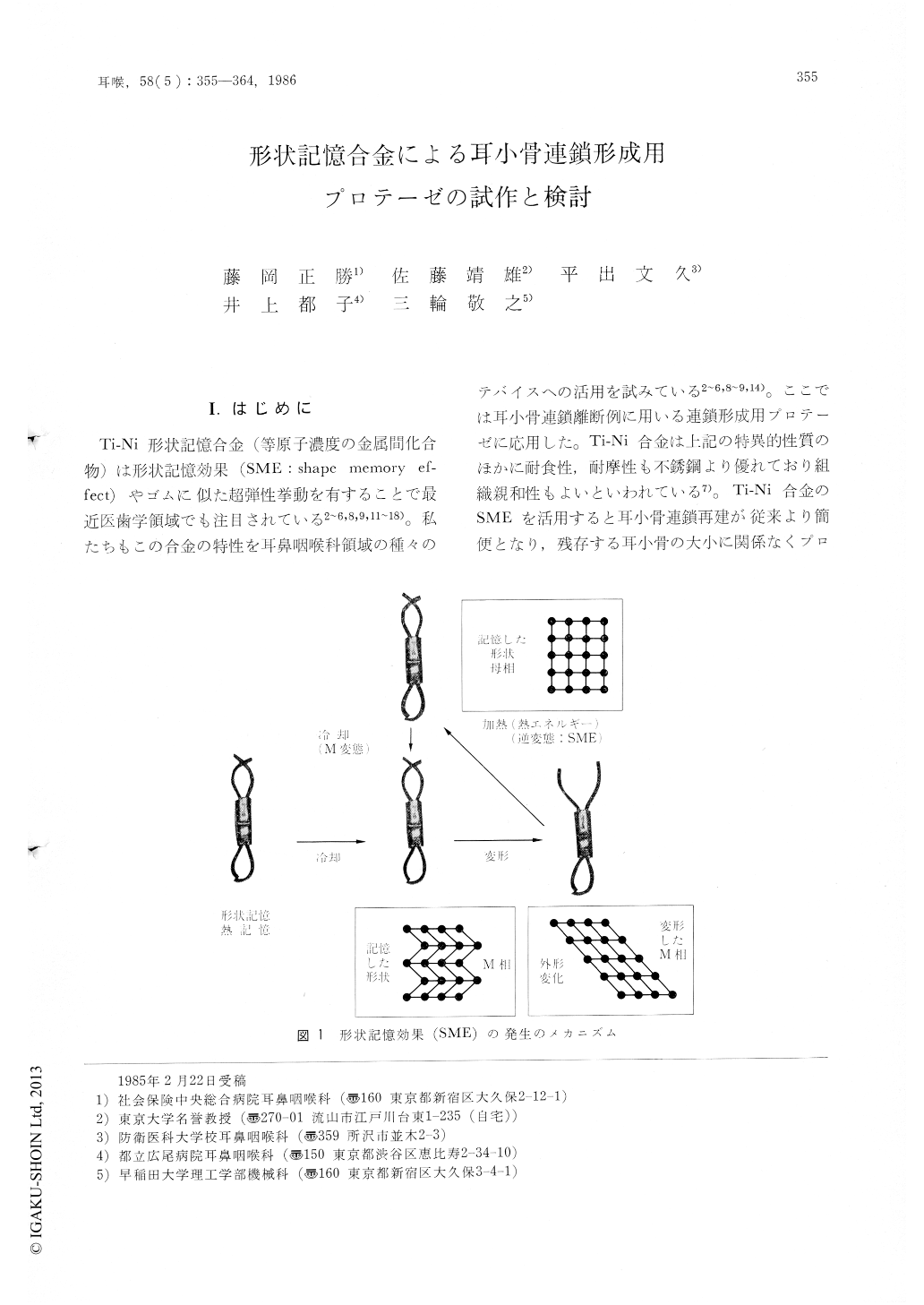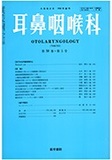Japanese
English
- 有料閲覧
- Abstract 文献概要
- 1ページ目 Look Inside
I.はじめに
Ti-Ni形状記憶合金(等原子濃度の金属間化合物)は形状記憶効果(SME:shape memory effect)やゴムに似た超弾性挙動を有することで最近医歯学領域でも注目されている2〜6,8,9,11〜18)。私たちもこの合金の特性を耳鼻咽喉科領域の種々のテバイスへの活用を試みている2〜6,8〜9,14)。ここでは耳小骨連鎖離断例に用いる連鎖形成用プロテーゼに応用した。Ti-Ni合金は上記の特異的性質のほかに耐食性,耐摩性も不銹鋼より優れており組織親和性もよいといわれている7)。Ti-Ni合金のSMEを活用すると耳小骨連鎖再建が従来より簡便となり,残存する耳小骨の大小に関係なくプロテーゼによりつかませることができる点等々利点は少なくないのでここに報告したいと考えた。
We examined characteristics of prosthesis made of Ti-Ni shape memory alloy from both medical and engineering perspectives, with a view to reconstructing the ossicular chain in hearing impaired individuals. A shape was inprinted on the shape memory wire by heating it in clay and at 400-500℃ for 5-50 minutes. After deformation, the original shape of the wire is easily recovered in several seconds by application of a few volts.
From an engineering point of view, we examined the relation between temperature and recovery force of the Ti-Ni shape memory alloy (As : 50℃, Af : 70-80℃) wire. We also examined the relation between the strength of th e grip after attaching the prosthesis to the ossicle and the diameter of the Ti-Ni shape memory wire.
In the hand type prosthesis, the strength of the grip after attachment to the ossicle depends on the length of the hand and the diameter of the shape memory wire. In the spiral type prosthesis, the strength of the grip after attaching it to a split formed by spirals depends on the diameter of the wire (Φ), the diameter of the coil (d). The following relation is generally considered to exist. : gf ∝Φ4ld3. For example, in the former prosthesis, about 70 gf w as recorded in 4mmΦ of the alloy wire, and in 2mm length of hands. In the latter prosthesis, 40 gf was recorded in 4mmΦ of the alloy wire and in 2mm d of the coil.
In animal experiments, the Ti-Ni shape memory alloy w ire was inserted to the temporal muscle or the tympanic cavity of marmots. In cases of short survival (2 weeks), the alloy wire, which was taken out from the tympanic cavity or temporal muscle of the marmot, was covered with thin connective tissue (10μ) and no inflammatory changes were observed in the surrounding tissue. We are now undertaking examinations of long survivals.
In pathological and clinical cases, the prosthesis was attached to the middle ear ossicles to reconstruct the ossicular chain, and then removed. Regardless of the size of the remaining ossicle, only several minutes are needed to reconstruct the ossicular chain with the shape memory alloy prosthesis.

Copyright © 1986, Igaku-Shoin Ltd. All rights reserved.


